
Configuration
To get started with the XACT S1 and JPLAY app, you need only select XACT femtoServer as the source and XACT S1 as the player. Then, you can add your Qobuz and Tidal accounts, and that’s basically it.
There are two ways to load music to the S1’s internal drive. Over the local network via standard Samba sharing using the server’s IP address. The user and password are supplied on a Quick Start document. Alternatively, when a USB drive is connected to the USB-HDD port at server power on, a copy process is executed. XACT will shut down automatically once all files from the USB drive are copied.
Once the files are copied, the server needs to be re-indexed, and the new data synced to the JPLAY app’s local database, which can both be done from the app. The resulting local database enables super-quick browsing and powers features such as Recently Played Tracks and retaining the playback Queue.
Dual S1 Setup
The XACT S1 can function standalone as a music server and player (as reviewed), or it may be accompanied by a second S1 running bespoke Router/Switch firmware to achieve the best sound quality. A single S1 can run either the Server/Player software or the Router/Switch software. The S1 cannot perform both functions at the same time.
Basic Setup: XACT S1 as a music server/player
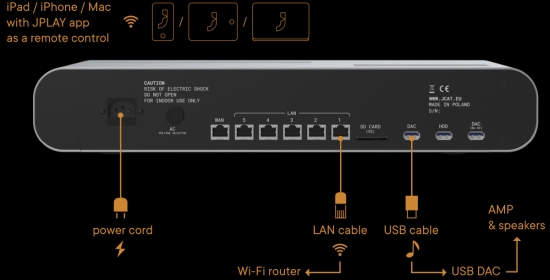
Dual Setup for the best sound quality: XACT S1 as a network switch/router + Second S1 as a music server/player
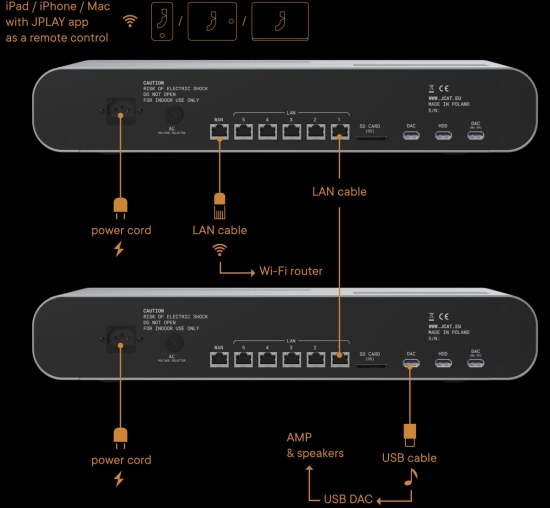
To be released later: XACT N1 Network Switch
In addition to the XACT S1 in its Network Switch capacity, the company will also be releasing a more affordable Network Switch called the XACT N1, later this Fall. See the preview image below.
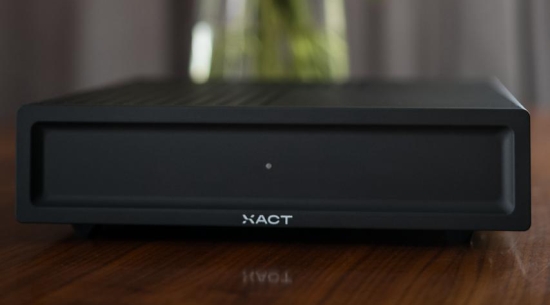
XACT Phantom LAN and XACT Phantom USB
Along with the XACT S1, the brand-new XACT Phantom LAN and XACT Phantom USB cables were supplied to use with the server. These cables are so new that they’re announced as “coming soon” on the XACT website at the time of this review.
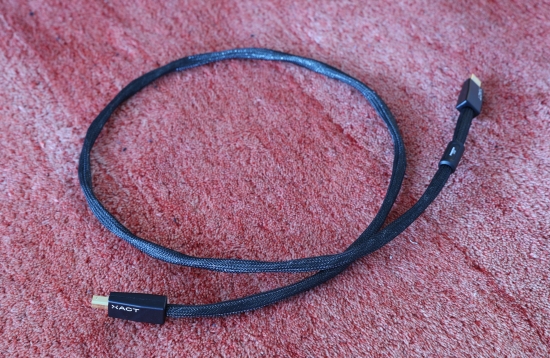
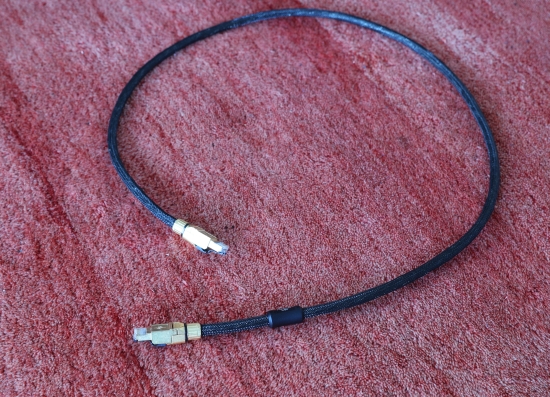
The cables are directional and are both recommended to be used with the XACT ring closer to the S1. This means that the usual use of signal flow in the direction of the text only goes for the USB cable, where the text on the ring reads toward the DAC. For the LAN cable, however, the text reads toward the S1. It’s just something to keep in mind: Use the rings for both cables at the server side.
Review Context
The XACT S1 will be listened to in the main system in combination with the Precision C1.2 DAC. The rest of the system comprises the CH Precision L1 preamplifier, CH Precision A1.5 power amp, and Magico S1 MkII speakers. Available for comparison are the Grimm MU1 and Antipodes Oladra Music Servers, the Aqua LinQ network endpoint, and the Aqua La Diva M2 CD transport.
Foreword
All music streaming protocols and playback methods have an inherent character. For instance, Squeeze and UPnP/MPD sound quite different from Roon. The latter sounds full-bodied, smooth, and rich in tonality but not quite as crisp, pure, and direct compared to the aforementioned alternative formats. The same applies to desktop music playback apps, where, for instance, JRiver Media Center sounds smoother and more relaxed than Foobar2000, which sounds tight and controlled, even when the exact same output methods are used on the same computer with the same USB interface. Technically, this may not make much sense, but I accepted it as a fact of life. It’s also what inspired Marcin to create JPLAY Femto: to improve the sound quality of music playback on a PC.
Of the aforementioned formats, UPnP and its playback component, MPD (Music Player Daemon), have always sounded best to me. It’s just that, so far, the UPnP app interfaces have dropped the ball in terms of functionality, especially when compared to Roon’s feature-rich interface. But JPLAY for iOS turned this around! Soon after I reviewed this fantastic app, I switched back to UPnP and have not looked back.
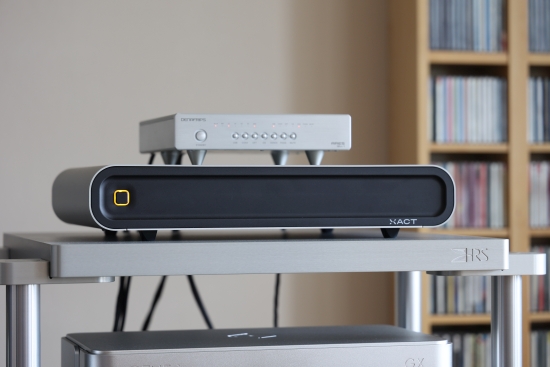
For almost two weeks, the XACT S1 continuously ran music to the Denafrips DAC so that I could perform other tests with my main DAC simultaneously.
Running In & Stability Test
Although the S1 was a demo unit that had been used before, the XACT Phantom LAN and Phantom USB cables were brand-new. Marcin advised that they will need 200 hours to fully break in. I made sure to allow 200+ hours before doing any listening.
This extended running-in period simultaneously provided an excellent stress test, as the app was loaded with a massive queue accumulating up to 4 days of playing time. Not once did the music stop playing, and the app never lost the connection. That’s impressive because I’ve experienced other UPnP servers’ interfaces becoming slow to respond or even freeze when attempting the same.
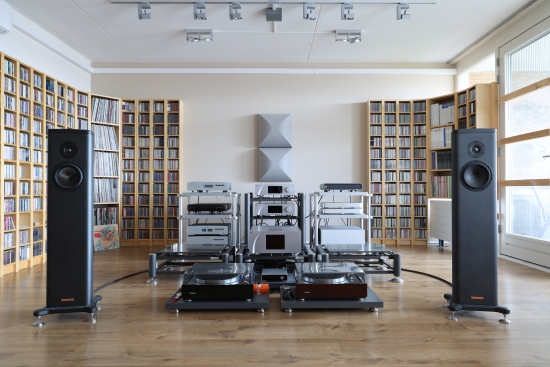
Initial Listening
The S1 offers two USB outputs, a Main output (DAC) and one without a 5V connection (DAC no 5v) to facilitate experimentation. It’s recommended to use the main USB port, and since the C1.2 DAC only worked with the powered port, that’s what I used.
For my first impressions, I listened to the XACT S1 using the supplied XACT Phantom LAN and XACT Phantom USB cables. The Phantom LAN was connected to the Silent Angel NX switch with Genesis GX Clock, and the Phantom USB cable was connected to the CH C1.2 DAC.
As I was already familiar with the JPLAY software, I felt right at home with the XACT S1. Power on the unit, select the Femtoserver and S1 player, sync the library, and that’s it. Naturally, you can also set various preferences, such as default queuing behavior, but the app is basically good to go using its default settings. As a visiting friend found, even if you’re using the software for the first time, it is intuitive right away.
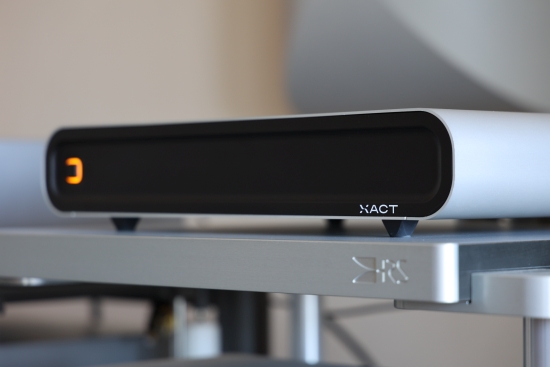
I must admit my expectations were partly primed due to my earlier experience with UPnP in combination with the Antipodes Oladra and the Melco N5-H50 and, prior to that, the Melco N1ZH. On the other hand, I read several reports while assembling data for the technical details of this review, praising the XACT S1 for its “analog”-like sound. This made me wonder what the S1 would actually sound like. Would it be clean, pure, and direct, as one would expect from typical UPnP? Or would it be smooth, rich, and organic, as one might expect from an audio component described as sounding “typically analog”?
As I soon found, the S1 is neither. Or both, depending on how you look at it. What the XACT S1 provides in combination with the XACT Phantom LAN and USB cables is a uniquely nimble and articulate yet smooth and lush presentation. It’s a combination you usually do not encounter. Last month, I reviewed the Melco N5-H50, and the XACT S1 reminds me of it for its unique blend of technical excellence and natural flow. The XACT S1 takes these strengths and adds an extra dose of lyrical involvement, smoothness, liquidity, and soul. What’s interesting to note is that I refer to the Melco being used as a server streaming directly to the C1.2’s built-in renderer versus the XACT S1 being used with USB. As I repeatedly found, most servers sound comparatively mechanical or analytical via USB, but the XACT S1 positively deviates from this. It is one of the select music servers that I feel sounds lush and organic via USB. No doubt, this is where the JCAT experience has come in. The Antipodes Oladra and Taiko Audio Extreme also make the interface work, but I have never heard this kind of performance from a server at the XACT S1’s price point.
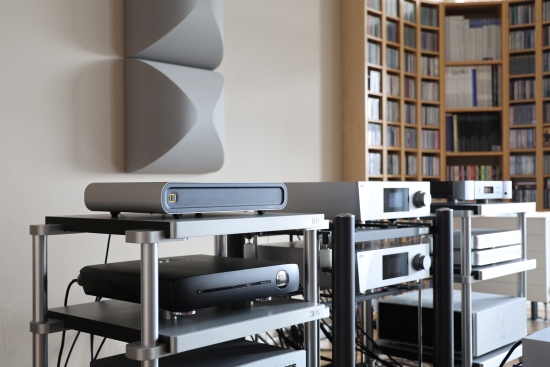
Next: Comparisons, Tweaks, and Interim Score
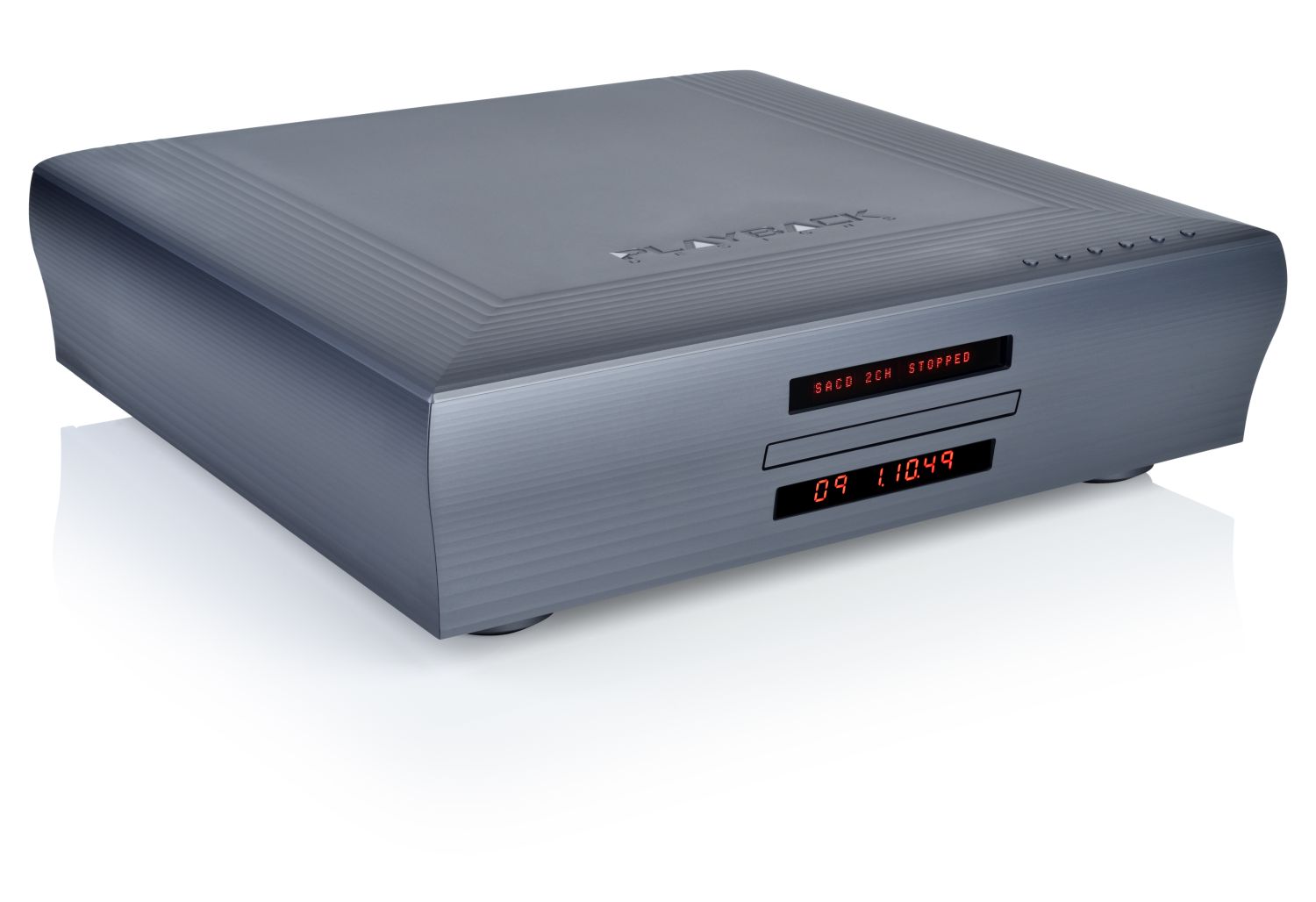






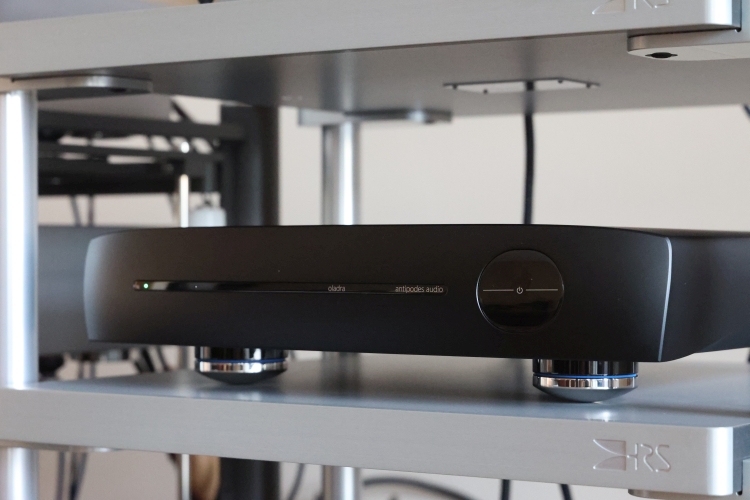
Some of us at the JPLAY forum have tested the JPLAY iOS app, via an RJ-45 cable, from the Audio Network router to a Lightning to Ethernet adapter, connecting the latter to the iPad or iPhone, with impressive results. If you still have the XACT S1, you might want to look into it. Carlos
You mentioned that the JPLAY for iOS app runs on iPads and iPhones, and although it is not officially endorsed for MacOS it runs perfectly fine on the original M1 MacBook Air as well.
Marcin told me that a Mx MacBook with JPLAY for iOS running on it can output directly via USB to DAC.
So it might be possible that this software gives the Macbook a nice uplift in SQ.
Did you try this?
Thanks
Hi Matt, Although it might indeed work and sound decent enough, I’d be hesitant to expect anything beyond that, given that the Macbook has no special power supply, audio interface, or USB hardware. Earlier experiments with several Windows PCs and my previous Intel Macbook Pro did not yield anything spectacular. That said, I have never used my current M1 MacBook with any of my DACs, so I don’t really know:-)
Thank you for your review, Christiaan. I appreciate that you’ve taken the time to evaluate the performance of both the player and server apps, especially noting the shift in hierarchy favoring UPnP/mpd. We previously discussed Squeeze + Squeeze, but unfortunately, it is not compatible with JPLAY. Additionally, your comparison with Taiko (though I understand you won’t review it), Oladra, and CDs helps put sound quality into perspective.
In a high-performing setup, we’re always eager to understand when and how the system performs at its best. You suggest that S1 may benefit from a complementary S1 running bespoke firmware to achieve optimal sound quality. Given the meticulous attention to detail—from the specially-selected industrial-grade 4TB SSD with the XACT Link drive cable to the highly durable OS SD card designed for military conditions—it seems clear that playing local files represents the pinnacle of sound quality in a single S1 unit, followed (closely) by streaming from Tidal or Qobuz.
Is that correct, or am I mistaken? If you did compare with differnent file types that also would be very interesting to know.
All the best,
Paul
Hi Paul, I’ve not heard the dual S1 setup. That part is added for information only.
The SQ delta between local and streaming depends on a few variables, an important one of which is the recording date. Recent files often sound better streaming than when ripped from a CD. For older albums, it can go both ways, especially when comparing originals with remasters. But under equal circumstances, more often than not, local is better.
When comparing purchased and downloaded Qobuz files, I tried WAV and FLAC but can’t be sure which is the master format. It could very well be FLACs, from which the WAVs are derived. In any case, in these particular circumstances, local WAV sounds best, followed by local FLAC, and then streaming. However, the differences are quite small, especially between local FLAC and streaming FLAC. Ultimately, I find I am very comfortable listening to either source or format, regardless of the small differences.
From all my switch reviews, I know they affect both streaming and local music playback. In other words, the music stream need not actually travel through the switch for the latter to have an effect on the sound.
Thank you for your response. I was already aware of your preference for WAV files and local storage, but I’m curious if this also applies specifically to the S1, given that Marcin emphasized the integration of the local SSD.
It seems we’re constantly at a crossroads between playing from local storage and streaming, with difference in sound quality often diminishing. However, in certain setups—and particularly with certain files like WAV—a noticeable difference can still be heard in 2024. Apologies if I misunderstood your point.
Hi Paul, to clarify, there is still an audible difference between local WAV and streaming FLAC, and this is audible with the Grimm, Antipodes, and XACT S1. The difference is smaller between local FLAC and streaming FLAC. And, sometimes, streaming can be better than a ripped CD. My stance is that the difference is not always large enough to warrant worrying about too much. Marcin is also a huge fan of DSD, and playing DSF files through XACT S1 was an important part of the fine-tuning process. For DSD playback, you obviously need local storage, which helps explain the emphasis.
That makes more sense to me now. I really appreciate it.
Thank you!
In addition to considering how a switch affects local file playback, we should also factor in (any) network noise from the modem all the way to the streamer and dac, and any connected devices, power supplies included.
In sensitive systems, even minor network noise can become noticeable. This might explain why disconnecting the Ethernet cable sometimes improves audio quality, although it’s not a practical solution if you prefer to use well-designed music apps and software.
Regarding file formats, besidesc using the WAV format, achieving optimal sound quality is often best with files that match the original sample rate and bit depth of the recording, provided you can determine those specifications.
Fantastic review, as always Christiaan. You are an asset to the audiophile community, keep up the great work 🙂
Thanks, Watts!
I own a Taiko, Should I sell It for the XCAT?
Given that I also work for Taiko Audio, I need to avoid a conflict of interest. So, I’m afraid I cannot comment on the Taiko Extreme.
Allow me to give it a try. Based on the review, it seems that the XACT S1 is a strong contender but if price isn’t a concern, it might not quite reach the level of the top-tier servers like the Antipodes Oladra or Taiko Audio Extreme.
That said, it’s an important question to consider. Also, do you currently own a Taiko + a network card + an Extreme Switch + an Extreme Router?
If you lean towards local files, Marcin (and likely Emile as well) have put considerable effort into optimizing local playback. What types of files do you typically play?
Ultimately, they each have distinct sound qualities, so your decision will come down to what suits your listening preferences best. Happy listening!
I own the USB card, a sotm switch with clk inside and a super clock sotm. I used sotm linear power supply for both and 2 Sotm Ethernet with filters cat7 and one stack audio Ethernet filter. My Dac is apl sr mk2, have kondo g700/melius Accu A80, TAD cr1tx
I assume you’re primarily focused on streaming, which makes sense given the attention you’ve paid to your network. Even upgrading the router’s power supply could make a difference.
Perhaps Christian could help you by identifying the distinct sound characteristics of the Taiko, Oladra, and XACT S1 without preference. If anyone can articulate the sometimes subtle audible differences between them, it’s him!
Thanks Paul, I have a Sotm power supply too on my internet box.
(-:
All I can say is that the two severs sound very different. One is not better than the other, but they do have different perspectives, making it a personal matter. Also, the two employ different music playback suites (UPnP/JPLAY and Roon). What I would recommend is to audition the XACT S1 next to the Extreme to form your own opinion.
Thanks Peter, I leave close to Lille, I think you too? If one day possible to make an audition. Edward is installing last version of XDMS at same time I make my email. I will saw what it will able to do
If you’re open to all possibilities and recognize the potential of networks and switches in high-end audio—especially after hearing it yourself—why not consider selling the Taiko for two XACT S1 units with a few recommended JCAT cables? It seems that “the XACT S1 can be paired with a second S1 to achieve the best sound quality. Of course first we keep waiting for further audible insights from Christiaan 😉
If I recall correctly, Marcin mentioned that he connects directly to the router (or box) and either disconnects his iPad or uses a wired connection. Given that, with a S1 combo you might also consider selling the SoTM switch with the internal clock, along with the Super Clock SoTM, SoTM linear power supply for both, two SoTM Ethernet cables with filters (Cat7), and one Stack Audio Ethernet filter.
Hello, Thank you for the marvelous reviews you provide! Always a pleasure to read them.
I bought a Weiss Helios DAC. It has not arrived yet. Meanwhile, I’m shopping for a server/streamer. The two that sound most compatible to me on paper are the K22 and now the Xact. Different profiles to be sure. I’ve heard the Oladra. So, I understand the house sound. But, I’ve not heard an Xact—and it’s likely that the only way to do this is to buy one. And so, I write to ask.
I have Pass xa60.8 monos and an XP-32 preamp. Like you’ve experienced, I’m trending away from the romantic and will replace them as I can, in favor of Gryphon Diablo 333.
I have Magico A5 speakers.
Which of these two streamers is the best match (short term or long term or both)?
Thank you in advance for your insight!
Hi John, honestly, it depends on your personal sonic preferences, as well as the software you want to use. Antipodes offers a complete software suite while the XACT S1 offers only UPnP. That said, the sonic differences will be a more decisive factor. Antipodes has an earthier and beefier, more full-bodied sound, especially the K22, while the XACT has an airier and more delicate sound. Although I have not directly compared the K22 with the XACT S1, I did review all Antipodes models, and know how they compare. The K22 offers great value for money, but is not quite as articulate, refined, or highly resolving as the Oladra or the XACT S1.
Thank you Christiaan (and Paul)! Those are all good things for me to consider.
“The two that sound most compatible to me on paper are the K22 and now the Xact.”
You’ve chosen a very advanced DAC with various inputs, so I think you should carefully consider which output you prefer from your server. The Xact can only output through USB, so you’ll be limited to that option. Additionally, the K22 is a medium-powered server, which might partially explain its more romantic sound signature. In contrast, the K50, being higher-powered, should sound more agile.
You didn’t mention whether you prefer streaming or local files, and that’s an important consideration too. Both servers perform best with local files streamed from a Samsung PM893 SSD (preinstalled in the Xact).
All Antipodes devices with digital outputs include an additional reclocking/regenerating stage compared to the USB output. The Oladra, however, has an extra reclocking/regenerating stage for both USB and digital outputs compared to the other devices.
Given your budget and sound preferences, you really should (at the very least) audition the Xact and a higher-end Antipodes model.
Would you kindly point out if hfa favourite is higher or lower than highly recommended
Many thanks
Hi Mark, That is an understandable question, which is answered in the intro on the Awards page. Basically, they have the same ranking, but Favorite components are actually part of my inventory, meaning they are also actively used.
Thanks again Christiaan for you informative detailed insightful reviews
Do you think play music from usb through server better than streaming?
Kind regards
This is something I’ve often commented on throughout my reviews, and my opinion has slowly changed in more recent years. In a nutshell, streaming has become very good. There are still differences, just like there are between local FLAC and local WAV, but with a good server running good software, the difference between streaming from Qobuz, and playing the exact same FLAC file (downloaded from Qobuz) played locally, are so small that they no longer bother me. To be clear, the same file downloaded from Qobuz as WAV, or a good CD rip in WAV, still sound better. But even these differences I can usually live with, certainly for casual listening, as long as I don’t make AB comparisons.
Thanks again
I actually for casual listening for me streaming is good for convenience but the sound is very distant because it depends on internet connection so my conclusion is that streaming cannot give emotional musical experience like palpable formats.
I have Bluesound Nano and when I use it as usb drive it’s much better than its streaming module despite the clarity of the sound is the same.
Now I’m waiting for Shanling et3 to arrive next week to see if it can outperforms Marantz cd60.
Kind regards
Sure, precision is one thing, emotion is a relative matter. On the whole, palpable formats such as CD and especially Vinyl remain different in nature from streaming and local music on a music server. Nevertheless, streaming can sound very good compared to local music library playback, and also emotionally satisfying, but it depends on your expectations and on the software implementation on the server or streamer.
Thanks again
By the way, can you tell us please what cd transports you are going to review in the future?
Kind regards
I’m currently reviewing the Bricasti M19 with the M21. I have no predetermined plans for which CD transports I might do next. As soon as a review is planned, this is shared on the HFA Front Page under “Reviews in Progress”.